Michigan insects in the garden – Week 13: Crabronid wasps
These bee relatives are busy eating your garden pests.

The wasp family Crabronidae is one of our most diverse, with over 1,200 species in the U.S. and almost 9,000 species worldwide. Most of these species are also very unique in terms of their food choices, nesting locations and behavior, making them one of the most interesting wasp families to observe in nature.
The adult crabronids derive all of their nutrition from visiting flowers, and they are often easily viewed in late summer on flowers such as goldenrod (Solidago spp.). With a few exceptions, most crabronid wasps are predatory. They paralyze prey insects and fly them back to a nest in the ground, a plant stem or a rotten log. Their immature stage resembles a grub and will develop in the nest, surviving entirely on the food provided by the adult. Since this insect family has thousands of species, I will focus on just a few of my favorites.
Aphid wasps
Some of the smallest wasps of the Crabronidae belong to the subfamily Pemphredoninae. These industrious little garden helpers ferry paralyzed aphids on a one-way trip from infested plants to their nests in hollow plant stems or other natural cavities. Some species will even use artificial nesting substrates such as those provided by bee houses or bee hotels.
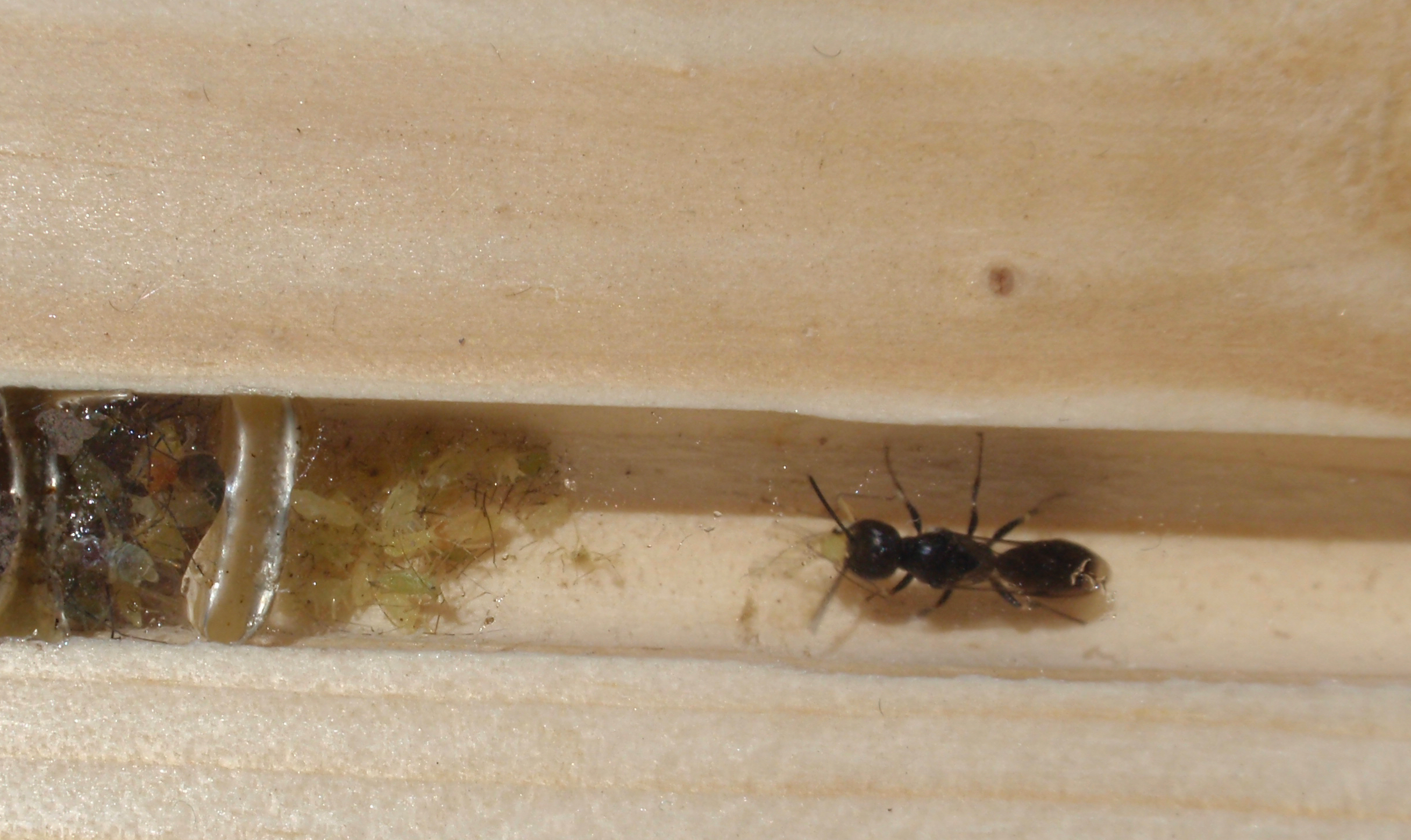
Aphid wasps carry the alive, but helpless, aphids tenderly in their mandibles and pile them up as a provision for their offspring. Aphids secrete a sugary substance known as honeydew, which provides food for the sooty mold fungus that often covers our garden plants in an unsightly black coating. Thanks in part to aphid wasps, our garden and landscape plants are not completely overrun by aphids and the sooty mold fungus.
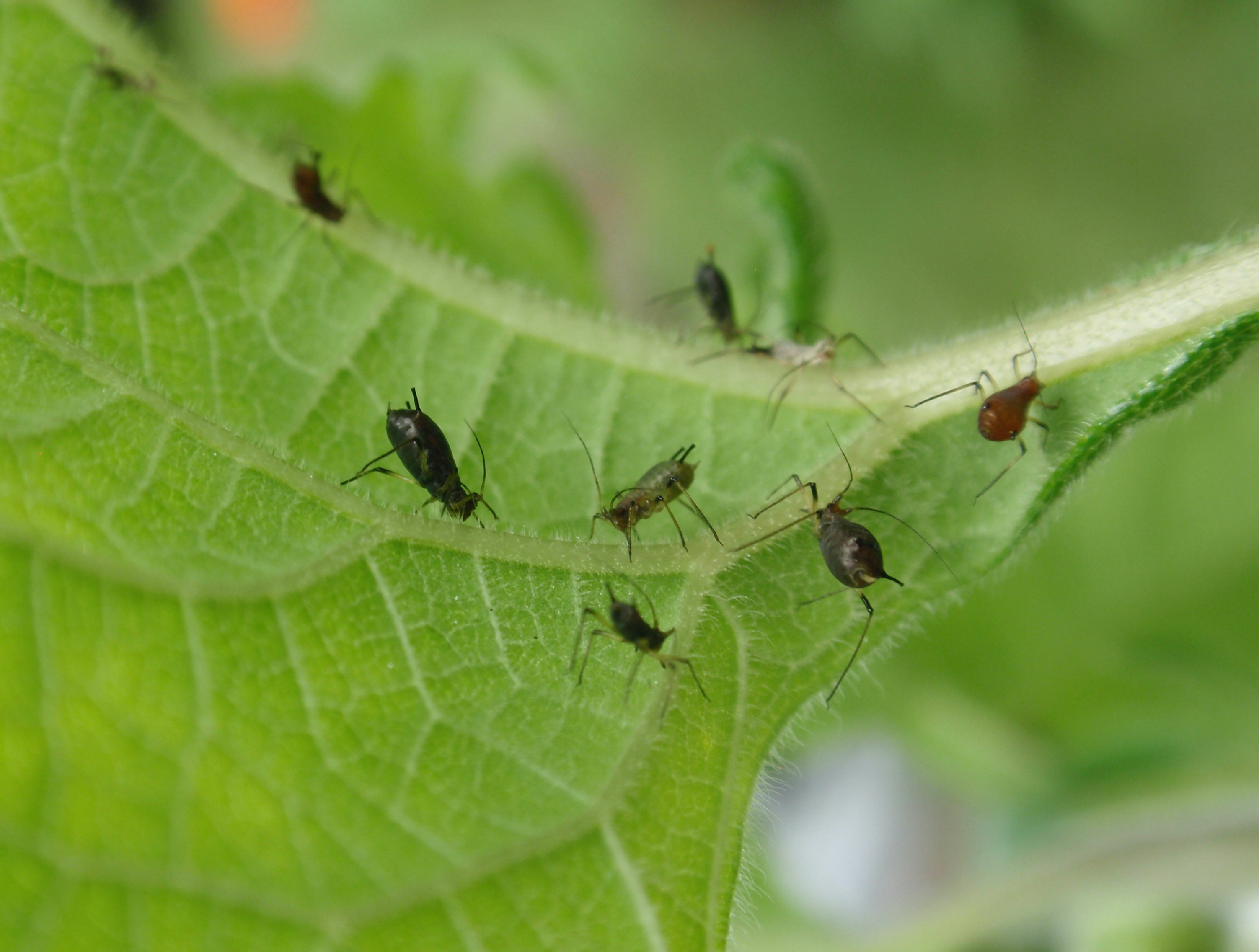
Sand wasps
You are most likely to encounter these members of the family Crabronidae when walking in sandy areas near Great Lakes shores, but they can be found anywhere in Michigan where sandy soil and their prey are abundant. Sand wasps (subfamily Bembicinae) are somewhat diverse in their food choices; some species specialize on stink bugs (Pentatomidae), others on flies from various families, and some choose sweat bees (Halictidae) as their prey of choice.
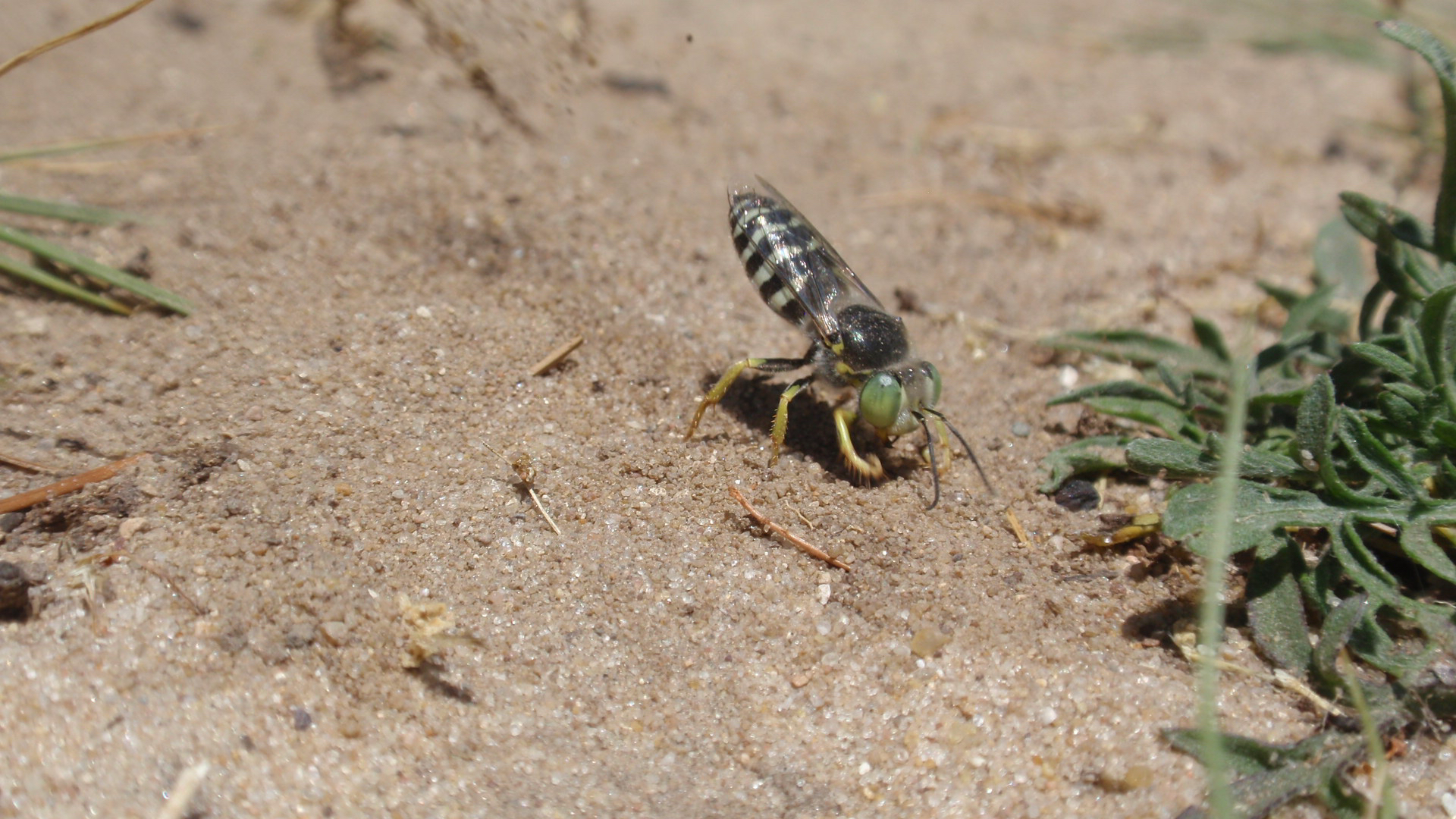
You may find many sand wasps nesting in the same area, known as an aggregation. However, sand wasps (like almost all other crabronids) are solitary hunters, and each one is responsible for its own nest. They are excellent diggers, able to burrow into loose sand in a matter of seconds. Sands wasp are fairly large and robust wasps that could be mistaken for yellowjacket wasps or bald-faced hornets. However, because of their solitary nesting behavior, they are not aggressive and it is safe to walk amongst their nests without fear of being stung.
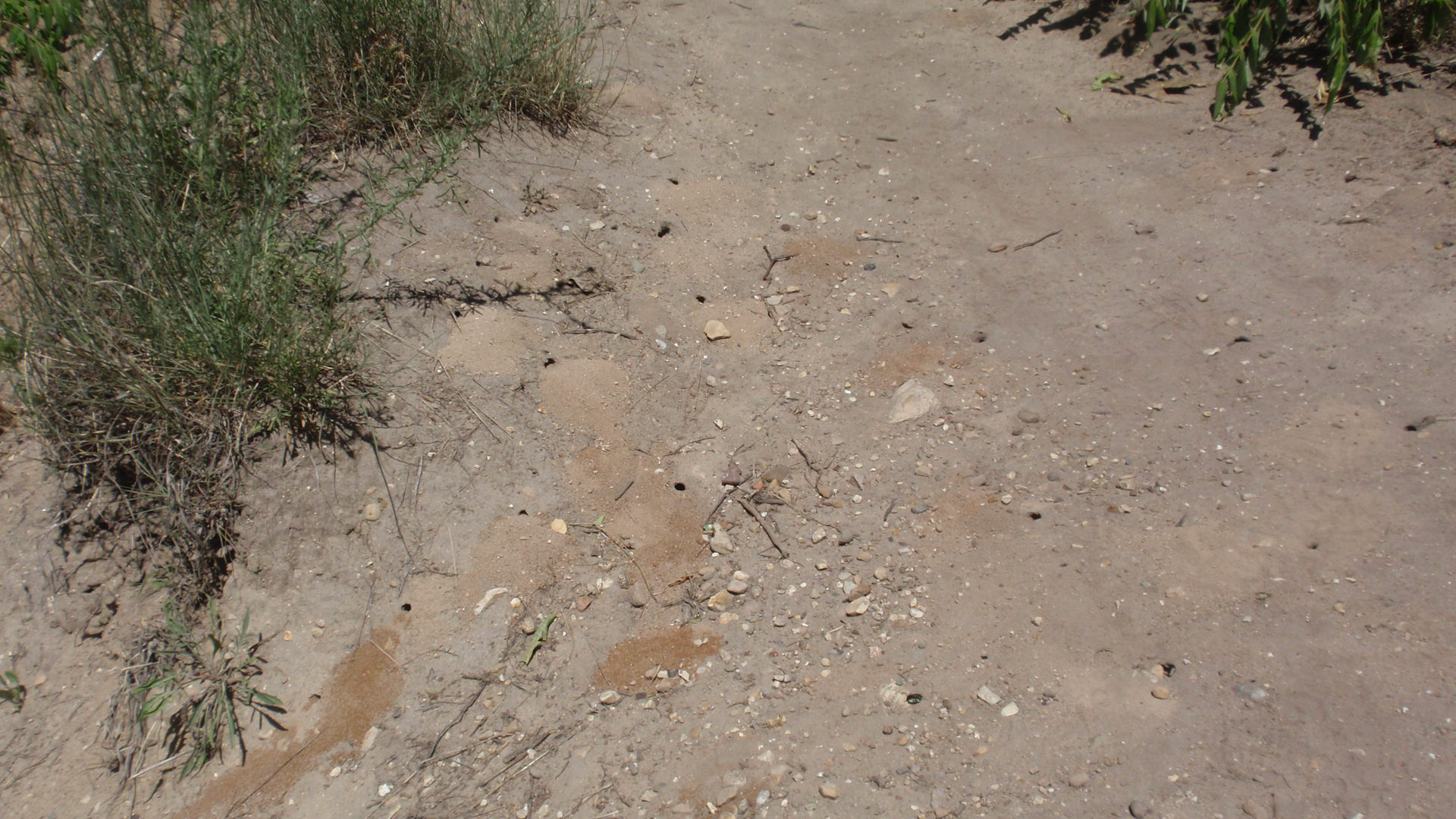
Bee wolves
For the most part, crabronids’ prey choices are pest and nuisance insects, so as a group the Crabronidae fall solidly within the category of beneficial insects. Of course, every family has a bad egg or two, and for the Crabronidae it is the bee wolves in the genus Philanthus (subfamily Philanthinae).
Bee wolves spend time on flowers, eating pollen and nectar like other crabronids, but they also use flower patches as hunting grounds. They will pounce on foraging pollinators like honey bees (Apis mellifera), paralyze them with a sting, and carry them back to a nest to feed their young. Fortunately, the impact of bee wolves is not considered to be significant to pollinator populations, and they are not considered pests by beekeepers or conservationists.
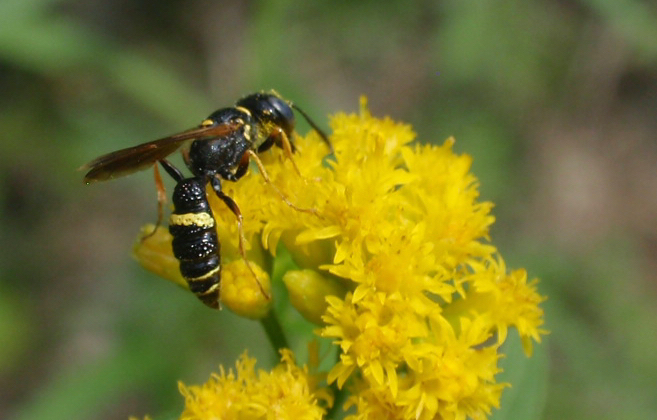
Protecting Crabronidae in your yard and garden
The latest genetic research tells us that crabronid wasps are not only closely related to bees (superfamily Apoidea), but that bees may actually have evolved from a crabronid ancestor millions of years ago. This amazing group of insects contains some of our smallest predatory wasps and some of our largest. Indeed, Michigan’s largest wasp, known as the cicada killer wasp (Sphecius speciosus), is a crabronid that has garnered much attention this year because of its resemblance to the infamous and undeservedly named “murder hornet.” Cicada killers are harmless, and like all other Crabronidae, are much more interested in hunting down their chosen prey than stinging people. Clearing up these kinds of misconceptions is just one of the services Michigan State University Extension provides through our education and outreach efforts.
All crabronids depend on flowering plants for food, so if you want to help them, provide some good pollinator habitat with a diversity of flowering plants. Also, avoid using pesticides on flowering plants or on plants with flowers nearby. Crabronids nest in the ground or in hollow plant stems, so leaving undisturbed areas in your yard with plant stems and other woody debris is a good idea too. You can learn more about how to protect crabronids and other pollinators at the Michigan Pollinator Initiative website.
We hope that you have enjoyed our Insects in the Garden series and we would like to invite you to provide us with valuable feedback about the series and whether it should continue in future years by responding to this brief survey. Thank you for reading and we wish you a glorious summer and fall in the garden this year.



 Print
Print Email
Email





